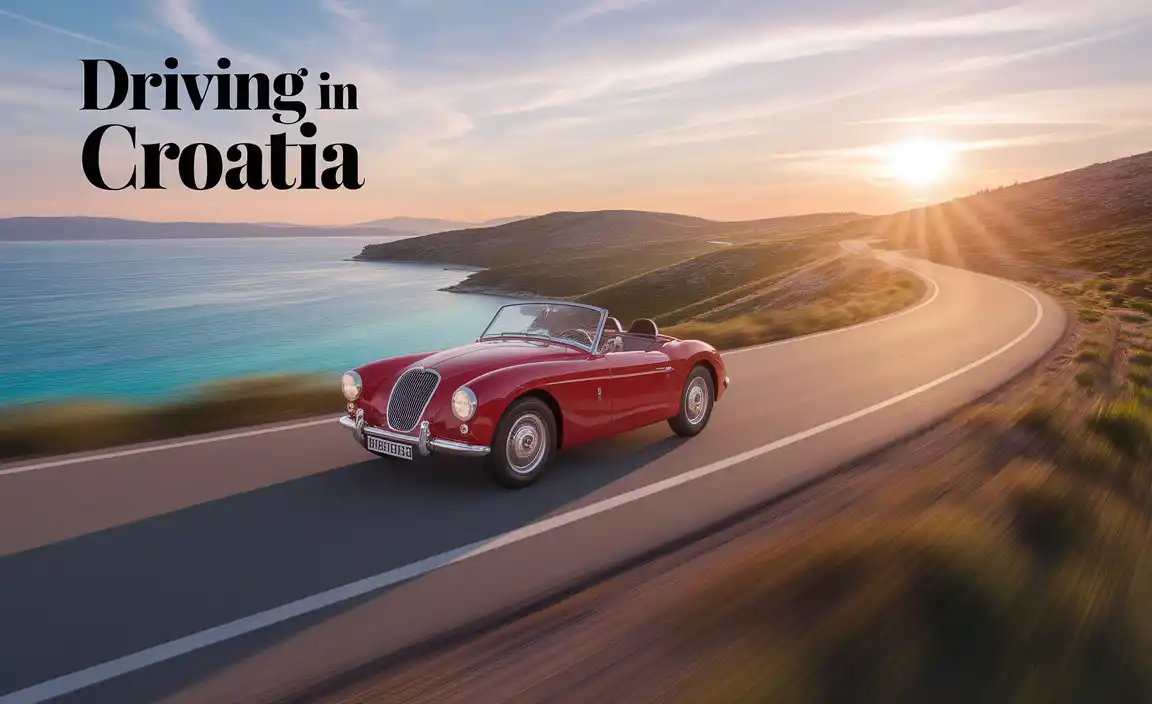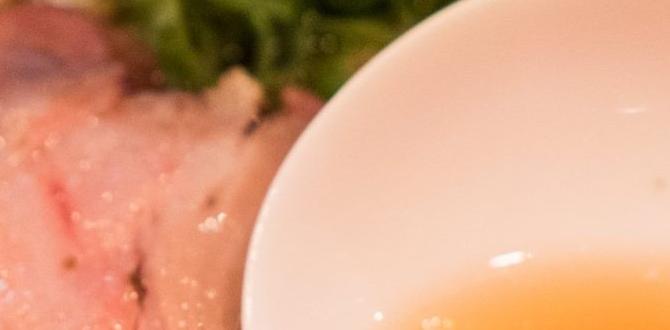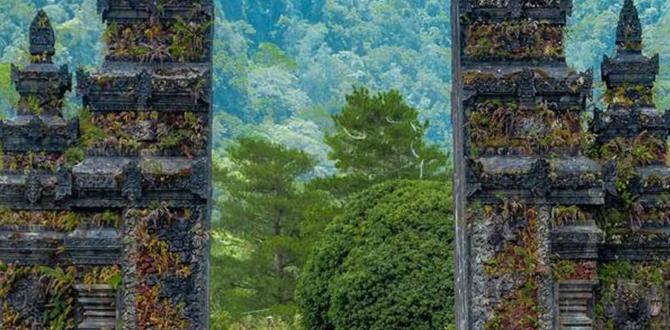Planning a 3-day Bolivia itinerary? This guide crafts a seamless adventure, focusing on Sucre and Potosí, offering rich culture, history, and stunning landscapes. We’ll help you navigate with ease, ensuring comfort and unforgettable experiences.
Dreaming of Bolivia but only have a few days? It’s totally doable! Many travelers worry they can’t see enough in just 72 hours. Planning a short trip can feel overwhelming, especially with Bolivia’s unique geography and culture. But don’t let a tight schedule stop you.
This guide is here to help! We’ll break down a fantastic 3-day itinerary that captures the essence of this incredible country. Get ready for an adventure that’s both manageable and memorable. Let’s dive into how to make the most of your short Bolivian escape.
Your Essential Bolivia 3-Day Itinerary: Sucre & Potosí
When you have limited time, focusing on a specific region is key to a fulfilling experience. For a 3-day trip to Bolivia, concentrating South of La Paz on Sucre and Potosí offers a perfect blend of colonial charm, rich history, and breathtaking scenery. These two cities are relatively close, making travel between them efficient and allowing you to immerse yourself without constant rushing.
Sucre, the constitutional capital, is a UNESCO World Heritage site known for its stunning white architecture, vibrant indigenous culture, and relaxed atmosphere. Potosí, a former silver mining powerhouse, offers a glimpse into a dramatic past and the chance to witness a unique way of life. Together, they provide a compelling snapshot of Bolivia’s soul.
Why Focus on Sucre and Potosí?
Choosing Sucre and Potosí for a short itinerary offers several advantages:
- Proximity: These two cities are well-connected, with regular bus services that take around 3-4 hours. This minimizes travel time, maximizing your exploration.
- Cultural Richness: Both cities are steeped in history and culture, offering distinct but complementary experiences. Sucre is about colonial beauty and democracy’s roots, while Potosí delves into industrial heritage and resilience.
- Accessibility: Sucre has an airport (SUC) with domestic flights, making it an accessible starting point. Potosí is easily reached by road from Sucre.
- Manageable Scope: Three days is ideal for experiencing the highlights of these two locations without feeling rushed. You can wander charming streets, visit key historical sites, and soak in the local ambiance.
Getting There and Around
Your journey likely begins by flying into a major Bolivian airport, such as El Alto International Airport (LPB) in La Paz. From La Paz, you have a few options to reach Sucre:
- Domestic Flight: This is the quickest way. Airlines like BoA and Amaszonas operate flights from La Paz to Sucre. Book in advance for better prices.
- Overnight Bus: A more economical option, but it takes around 9-12 hours. While efficient for saving daytime, consider comfort. For longer journeys, especially with changing conditions, having comfortable travel essentials like specialized adult diapers or discreet child diapers can significantly enhance your comfort and peace of mind, allowing you to relax on the journey.
Once in Sucre, getting around is easy:
- Walking: Sucre’s historic center is very walkable. Many attractions are within easy reach.
- Taxis: Readily available and affordable for longer distances or when carrying luggage. Agree on the fare before starting your journey.
To travel from Sucre to Potosí:
- Bus: This is the most common and practical method. Numerous bus companies operate this route daily. The journey takes approximately 3-4 hours and offers scenic views of the Bolivian highlands. Companies like TransCopacabana, Bolívar, and San Cristobal are popular choices, offering varying levels of comfort.
Day 1: Sucre – The White City’s Charms
Welcome to Sucre! Today is all about immersing yourself in the beauty and history of Bolivia’s constitutional capital. The city’s dazzling white architecture earned it the nickname “La Ciudad Blanca” (The White City), and its historical center is a UNESCO World Heritage site.
Morning: Colonial Grandeur and Historical Insights
Start your day with a stroll through Sucre’s main plaza, Plaza 25 de Mayo. This is the heart of the city, surrounded by important historical buildings.
- Metropolitan Cathedral: Admire the architecture and perhaps visit its museum, which houses religious art and historical relics.
- Casa de la Libertad (House of Freedom): This is a must-visit. It’s here that Bolivia declared its independence in 1825. The museum inside preserves important documents and artifacts, offering a profound connection to the nation’s past.
- Palacio de Gobierno (Government Palace): Observe the administrative heart of the city from the outside, appreciating its colonial design.
Consider a guided walking tour to get a deeper understanding of the city’s history and architecture. Many local guides are enthusiastic and knowledgeable, providing insights you might miss on your own.
Afternoon: Views and Local Flavors
After soaking in the history, ascend to a viewpoint for panoramic city vistas.
- Mirador de San Blas: A charming viewpoint offering lovely perspectives of the white rooftops and the surrounding hills. It’s a great spot for photos.
- Mercado Central (Central Market): For an authentic taste of Sucre, head to the bustling central market. It’s a sensory overload in the best way! You can find fresh produce, local crafts, and delicious, affordable food stalls. This is a perfect place to try traditional Bolivian dishes like salteñas (savory pastries) or mondongo (a pork stew).
If you’re traveling with children, the market can be an exciting place for them to see new things. Ensuring comfort for everyone, especially on warm days or during extended exploration, can involve light clothing and portable hydration. For parents managing younger children or those with specific needs, having access to discreet travel-friendly diapers can make all the difference in maintaining a relaxed outing.
Evening: Relaxation and Local Cuisine
As the sun begins to set, Sucre’s white buildings glow. Enjoy a leisurely dinner at one of the many excellent restaurants in the historic center.
- Calle de la Florida: This street is known for its lively atmosphere and numerous cafes and restaurants, offering everything from local Bolivian fare to international cuisine.
- Rooftop Bars: Many hotels and buildings offer rooftop terraces that provide stunning evening views of the illuminated city.
Consider trying Sucrense specialties like silpancho (breaded meat with rice and egg) or pique macho. It’s a great way to connect with the local culture through its food.
Day 2: Potosí – Silver, Mines, and Altitude
Today, we head to Potosí, a city that has profoundly shaped Bolivia’s history and the world economy. Perched at a dizzying altitude of over 4,000 meters (13,000 feet), Potosí was once one of the richest cities in the world thanks to its vast silver mines.
Morning: The Cerro Rico and its Legacy
The absolute highlight of visiting Potosí is a tour of the Cerro Rico (Rich Mountain) mines. This is not for the faint of heart, but it offers an unparalleled glimpse into the harsh realities of mining life and the historical importance of silver extraction.
- Mine Tours: Several tour operators offer guided excursions. These tours typically involve visiting the bustling miners’ market (where miners buy supplies like coca leaves and dynamite), entering a working mine shaft, and learning about the mining process and the life of miners.
- Safety First: Wear sturdy shoes, long pants, and a long-sleeved shirt. The tours provide safety helmets and lamps. It’s crucial to follow your guide’s instructions implicitly.
- Respectful Observation: Remember that this is a place of work for many. Be respectful of the miners and their environment. Ask permission before taking photos of individuals.
The altitude can be challenging here. It’s advisable to acclimatize as much as possible and drink plenty of water. For those with more sensitive bladder needs, especially regarding the physical exertion of mine tours, discreet adult diapers can offer an extra layer of security and confidence, allowing you to focus on the experience rather than potential discomfort. Similarly, parents of young children can find that convenient child diapers provide essential support.
Afternoon: Colonial Potosí
After descending from the mines (both literally and figuratively), explore Potosí’s colonial past.
- Casa Nacional de la Moneda (National Mint Museum): This is one of the most impressive historical buildings in Bolivia. It was once the royal mint where silver from Cerro Rico was processed. The museum is vast, showcasing colonial machinery, art, and exhibits on the history of mining and Potosí. Allow at least 2-3 hours here.
- Plaza 10 de Noviembre: Potosí’s main square is a great place to relax and observe local life. The Cathedral and the Government Palace flank the plaza.
- San Lorenzo de Carangas Church: Admire the intricately carved Baroque facade of this church, a masterpiece of mestizo architecture.
Evening: High-Altitude Dining
Potosí offers a range of dining options, often featuring hearty mountain cuisine. Given the high altitude, warm and filling meals are the norm.
- Local Restaurants: Try restaurants near the main plaza for traditional Bolivian dishes. Llama stew (caldo de llama) is a local specialty, perfect for the cooler climate.
- Bars: Enjoy a drink with a view if you can find a suitable spot, and ponder the city’s incredible history powered by silver.
Remember that Potosí is significantly higher than Sucre. Take it easy, stay hydrated, and avoid excessive alcohol to help prevent altitude sickness.
Day 3: Return Journey or Further Exploration
Your third day offers flexibility. Depending on your flight schedule or onward travel plans, you can either enjoy a leisurely morning in Sucre or Potosí, or begin your journey back towards a major hub like La Paz.
Option A: Leisurely Morning in Sucre
If you opted to return to Sucre last night, spend your final morning revisiting a favorite spot or exploring something new.
- Mercado de Artesanias (Craft Market): Pick up some last-minute souvenirs. You can find an array of textiles, ceramics, and silver jewelry. Haggling is expected, so be prepared to negotiate prices respectfully.
- Recoleta District: Explore this bohemian neighborhood with its charming plazas, artisan workshops, and more elevated views of the city.
- Museums: If you missed any during your first day, like the ASUR Museum (Museo de Etnografía y Folklore), dedicate some time to it.
Enjoy a final Bolivian breakfast or brunch at a local cafe before heading to the airport or bus station.
Option B: Morning in Potosí & Travel to Sucre
If you stayed in Potosí, you could:
- Visit the Torre de la Compañía: Climb this tower for another perspective over Potosí, offering views of the surrounding mountains and city.
- Relax in the Plaza: Enjoy a final contemplative moment in Plaza 10 de Noviembre.
Then, take a morning bus back to Sucre for your afternoon flight or onward journey. Factor in travel time to the airport when making your plans.
Departing Bolivia
From Sucre (SCZ), you can catch a domestic flight back to La Paz (LPB) or other major cities. If you are traveling overland back to La Paz, be prepared for a long bus journey (9-12 hours). Ensure you have all your travel essentials organized for this final leg.
Practical Tips for Your 3-Day Trip
Making the most of a short trip requires smart preparation. Here are a few essential tips:
Altitude Acclimatization
Both Sucre (approx. 2,810m / 9,219 ft) and Potosí (4,090m / 13,420 ft) are at high altitudes. Potosí is one of the highest cities in the world. Take it easy on your first day, drink plenty of water, avoid alcohol, and eat light meals. Coca leaves or coca tea are traditional remedies that can help alleviate symptoms.
Packing Essentials
Layering is key. The climate can vary significantly between day and night, and between cities.
- Clothing: Pack light layers – t-shirts, long-sleeved shirts, a warm fleece or sweater, and a waterproof/windproof jacket. Comfortable walking shoes are a must.
- Sun Protection: High altitude means strong sun. Bring sunscreen, sunglasses, and a hat.
- Medications: Carry a basic first-aid kit and any personal medications.
- Travel Comfort: For longer bus journeys or if managing specific bladder needs due to the physical demands or altitude changes, consider bringing discreet adult diapers. These offer security and confidence, ensuring you can focus on the journey. Similarly, for parents traveling with babies or toddlers, easily accessible and reliable child diapers are a lifesaver for maintaining comfort and cleanliness on the go. Brands offering high absorbency and a secure fit are ideal for ease of travel.
- Documents: Keep copies of your passport and other important documents separate from the originals.
Money Matters
The currency is the Bolivian Boliviano (BOB). ATMs are available in Sucre and Potosí, but it’s wise to carry some cash, especially for smaller purchases or in more remote areas.
Language
Spanish is the official language. While English is spoken in some tourist establishments, learning a few basic Spanish phrases will greatly enhance your interactions with locals.
Safety and Health
Bolivia is generally safe for tourists, but exercise common sense precautions:
- Be aware of your surroundings, especially in crowded areas.
- Secure your valuables.
- Drink bottled or purified water.
- Be cautious with street food, especially when you first arrive.
For reliable travel advisories, it’s always a good idea to check with your national government’s foreign travel advice, such as the U.S. Department of State or your country’s equivalent.
Sample Itinerary at a Glance
To help visualize your trip, here’s a structured overview:
| Day | Location | Morning Activities | Afternoon Activities | Evening Activities |
|---|---|---|---|---|
| Day 1 | Sucre | Plaza 25 de Mayo, Cathedral, Casa de la Libertad | Mirador de San Blas, Mercado Central | Dinner on Calle de la Florida, Rooftop bar |
| Day 2 | Potosí | Cerro Rico Mine Tour (book in advance!) | Casa Nacional de la Moneda, Plaza 10 de Noviembre, San Lorenzo Church | Dinner with local specialties, relax due to altitude |
| Day 3 | Sucre or Potosí / Travel Day | Craft Market or Recoleta (Sucre) OR Torre de la Compañía (Potosí) | Travel back to Sucre (if in Potosí), onward travel preparations | Departure from Sucre (SCZ) or beginning of longer overland journey |
Possible Extensions and Alternatives
While three days is a fantastic introduction, if you find yourself with an extra day or two, consider:
- Tarabuco Market: If your visit falls on a Sunday, the Mercado de Tarabuco is a vibrant rural market renowned for its indigenous culture and crafts. It’s a day trip from Sucre.
- Uyuni Salt Flats: While a 3-day trip doesn’t allow for the full Uyuni experience (which typically requires at least 3-4 days on its own), if you have more time and are flying into La Paz, you could consider a quick 3-day tour of Uyuni before or after visiting Sucre and Potosí. However, this would make the itinerary very fast-paced.
- Samaipata: If you prefer nature and archaeology, the pre-Inca ruins of Fuerte de Samaipata near Santa Cruz offer a different perspective.



